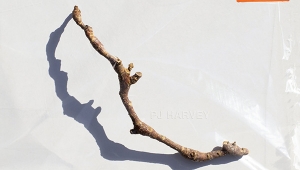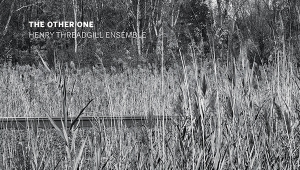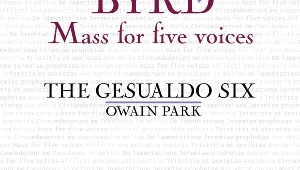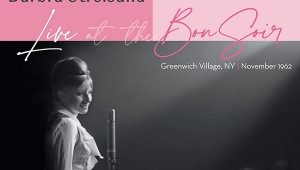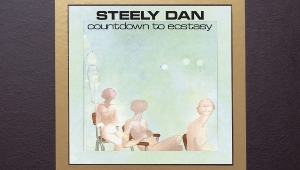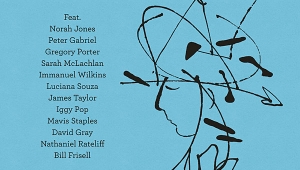| Columns Retired Columns & Blogs |
Recording of December 1992: Shostakovich: 24 Preludes & Fugues, Op.87
SHOSTAKOVICH: 24 Preludes & Fugues, Op.87
Keith Jarrett, piano
ECM New Series 1469/70 (437 189-2, 2 CDs only). Peter Laenger, eng.; Manfred Eicher, prod. DDD. TT: 2:15:21
Keith Jarrett, piano
ECM New Series 1469/70 (437 189-2, 2 CDs only). Peter Laenger, eng.; Manfred Eicher, prod. DDD. TT: 2:15:21
Not that many months have passed since I had the pleasure of reviewing (in April 1992, p.272) the Op.87 Preludes and Fugues in Tatiana Nikolayeva's three-CD Hyperion recording made in 1990, the third time that she had recorded this important set. I write pleasure, because this compendium, written for Nikolayeva in 1951 after a Leipzig Bach competition in which that pianist won first prize, is an extraordinary collection, one that has grown on me every time I have heard it. The set, in fact, may be the most important of its type—preludes and fugues in all the keys—since Bach's own Well-Tempered Clavier. In spite of its obvious contrapuntal basis, it also contains all the usual Shostakovian earmarks: the sardonic, the playful, the moody and grim, the intensely introverted, and the virtuosically outgoing.
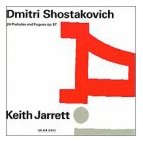 Comparing Nikolayeva's 2¾-hour-long survey with Keith Jarrett's, the latter a full half-hour shorter and on two rather than three discs, I have found several interesting differences. Overall, from the standpoint of sound, Jarrett's piano, beautifully recorded, is closer, easier to pinpoint, but never dry. In contrast, Nikolayeva's is the more distant, with consequently less easily perceived articulation; Hyperion has produced a recessed wash of sound that ostensibly derives from an empty London hall of considerable size as opposed to the comfortably large room sound presented in the ECM recording (Salle de Musique in La Chaux-de-Fonds, Switzerland). If Jarrett's is the more detailed performance, it also seems the more modern except for one obvious factor: the American pianist never produces harshness from his instrument. Nikolayeva, on the other hand, harkens back to the post-romantic, conjuring a style that exhibits many of the vestiges of romanticism, a greater use of rubato, more individualism in her tempo fluctuations, a greater shaping of melodic lines, and a tendency to emphasize fugal subjects while subjugating subsidiary parts. Her Bach playing is much the same.
Comparing Nikolayeva's 2¾-hour-long survey with Keith Jarrett's, the latter a full half-hour shorter and on two rather than three discs, I have found several interesting differences. Overall, from the standpoint of sound, Jarrett's piano, beautifully recorded, is closer, easier to pinpoint, but never dry. In contrast, Nikolayeva's is the more distant, with consequently less easily perceived articulation; Hyperion has produced a recessed wash of sound that ostensibly derives from an empty London hall of considerable size as opposed to the comfortably large room sound presented in the ECM recording (Salle de Musique in La Chaux-de-Fonds, Switzerland). If Jarrett's is the more detailed performance, it also seems the more modern except for one obvious factor: the American pianist never produces harshness from his instrument. Nikolayeva, on the other hand, harkens back to the post-romantic, conjuring a style that exhibits many of the vestiges of romanticism, a greater use of rubato, more individualism in her tempo fluctuations, a greater shaping of melodic lines, and a tendency to emphasize fugal subjects while subjugating subsidiary parts. Her Bach playing is much the same.
Both pianists are technically superior, Jarrett in particular emerging (as in Preludes 2 and 21) as really quite dazzling. Overall, Jarrett appears more analytical, Nikolayeva more freely expressive and expansive. That expansiveness, especially in the slower movements, is what causes such a remarkable discrepancy in playing times between the two: as examples, Jarrett's Prelude and Fugue No.13 lasts 7:03, Nikolayeva's 10:05; Jarrett's No.16 runs to 8:59, Nikolayeva's 12:44. Of course, a wetter ambience calls for a slower tempo in the interests of clarity, but differences of three to four minutes in pieces of such brevity seem almost startling. Throughout, in fact, it invariably is the Russian pianist who is the slower, but that slowness is never stagnant. She succeeds in holding one's attention at all times. Interestingly, it is Jarrett who is exceedingly close in almost all cases to Shostakovich's own metronome directions, though Nikolayeva had the closest, long-term musical relationship with both the composer and this score, expressly written for her. How should one go about choosing between them? Can one easily disregard the imprimatur of the Nikolayeva version?
I find both interpretations of great value. Just as one can derive different insights from a Beethoven Fifth as conducted quite differently by a Toscanini and a Furtwängler, the diversities between these two Shostakovich performances are ones with which one can easily live. Both versions interpretively have a great deal to offer in many different but equally valid ways. If finances are a factor, by all means choose the excellent Jarrett on his two CDs, but if two renditions are a reasonable possibility, I'd be most tempted to try both.—Igor Kipnis
- Log in or register to post comments






